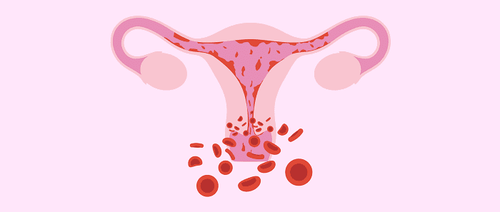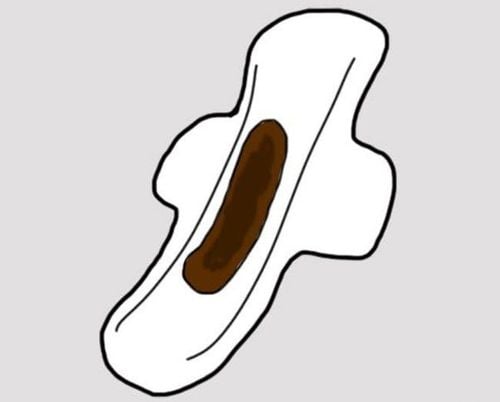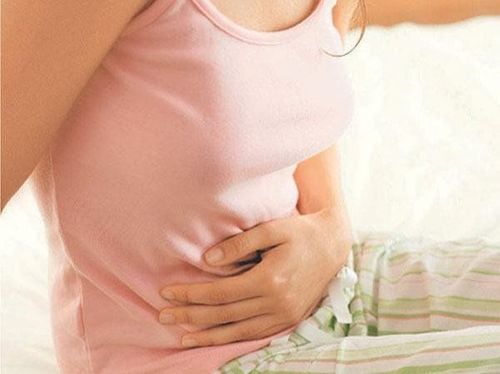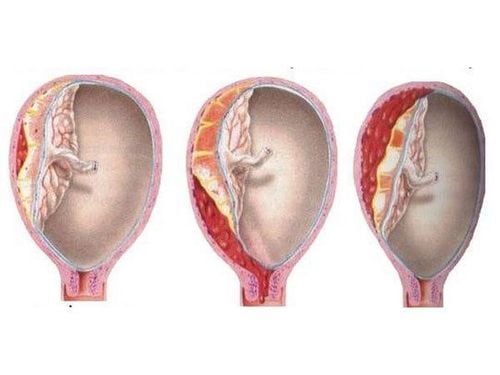This is an automatically translated article.
Adhesions in the uterus are the cause of many serious health problems in women such as menstrual disorders, infertility, miscarriage, etc. The following article will help you learn the methods of diagnosing adhesions. uterine cavity and uterine adhesion treatment methods are being used today.1. Causes of uterine adhesions
The uterus consists of three layers: the serosa, the muscular layer, and the endometrium. The endothelium is further divided into two layers, the functional layer (on top) and the basal layer (on the bottom). At each menstrual cycle, the functional layer is shed and is excreted in the form of menstrual blood. The bottom layer will have the role of regenerating a new functional layer.When the basal layer is damaged, the anterior and posterior uterine walls become fused together. The regeneration of the endometrium layer after the menstrual cycle is hindered, difficult to regenerate, the conception process is affected because the egg after fertilization cannot implant.
Causes of uterine adhesions include:
Abortion or placental aspiration: the most common cause of uterine adhesions is curettage, abortion or placental aspiration after birth, after miscarriage. When performing this procedure, the doctor usually tries to clean the inside very well, but because it can't be seen, it can damage the lining of the uterus, causing it to stick. Postpartum infection can also cause uterine adhesions. Interventional procedures to the uterine cavity to treat related diseases: when performing intrauterine dissection procedures, endometrial electrocution procedures, intrauterine microwaves, local radiotherapy, ...may cause mucosal damage. After surgery, if the patient does not follow the doctor's instructions properly, it can also lead to vaginitis, inflammation of the uterus, causing complications of uterine adhesions. Persistent gynecological infection or genital tuberculosis
2. Diagnosis of uterine adhesions

Kinh nguyệt không đều là triệu chứng của người bị dính buồng tử cung
Irregular menstruation: when the uterine cavity is stuck, the functional lining will not be able to develop, although the body still has symptoms signaling the cycle. Menstruation such as chest tightness, fatigue, discomfort, ... but the patient will have very little or no period depending on the degree of adhesion of the uterus. Lower abdominal pain: This symptom usually occurs about a month after abortion. The lower abdominal pain occurs often, the pain is tingling, in rare cases, the pain is severe for a long time. However, the symptoms of uterine adhesions are easily overlooked or confused with other conditions. Therefore, in order to diagnose uterine adhesions accurately, it is necessary to take X-ray of the uterus, fallopian tubes or hysteroscopy, when there is a thick image of uterine adhesions on laparoscopy, it can be diagnosed as uterine adhesions.
3. Treatment of uterine adhesions
Adhesions to the uterus, if not treated promptly, can cause infertility. Because when the uterus is stuck, the menstrual cycle is disrupted, affecting the ovulation process, so the ability to conceive is significantly reduced. In cases where the egg has been fertilized, but because the fertilization has been attached, the egg cannot implant, causing an ectopic pregnancy that affects the life of both mother and fetus. In the case of pregnant women with ovarian adhesions, because the embryo is compressed, there is no attachment point because the mucosa cannot regenerate, so the possibility of miscarriage will be very high.Adhesions of the uterus is a completely treatable disease, the most commonly used method is uterine surgery, separation of the adherent uterus and reconstruction of the uterine cavity. The most commonly used surgical method today is dilatation of the uterus. In this method, the surgeon will perform the separation operation through the image connected to the camera screen attached to the technical instrument. The manipulations include: local anesthetic of the female genitalia, opening the vagina with a speculum, and then inserting the adhesive separator to the site of the uterus.
After being treated with surgery for uterine adhesions, the patient will be prescribed pain relievers, antibiotics to prevent infection after surgery, and hormonal drugs to help the uterine lining grow back. again.
In cases where the patient has adhesions to the uterus due to genital infections or genital tuberculosis, the patient should be thoroughly treated for these diseases before hysterectomy.
During the treatment, the patient needs to follow the doctor's instructions, keep the intimate area clean, do not have sex, and periodically re-examine after surgery to ensure successful separation.
4. Prevention of uterine adhesions

Để phòng ngừa dính buồng tử cung, chị em cần vệ sinh vùng kín sạch sẽ
Please dial HOTLINE for more information or register for an appointment HERE. Download MyVinmec app to make appointments faster and to manage your bookings easily.













